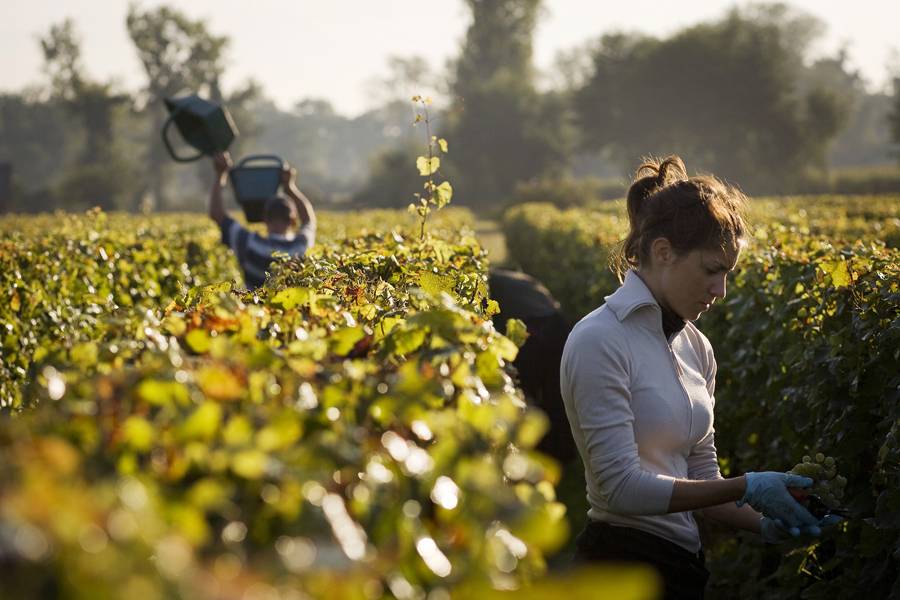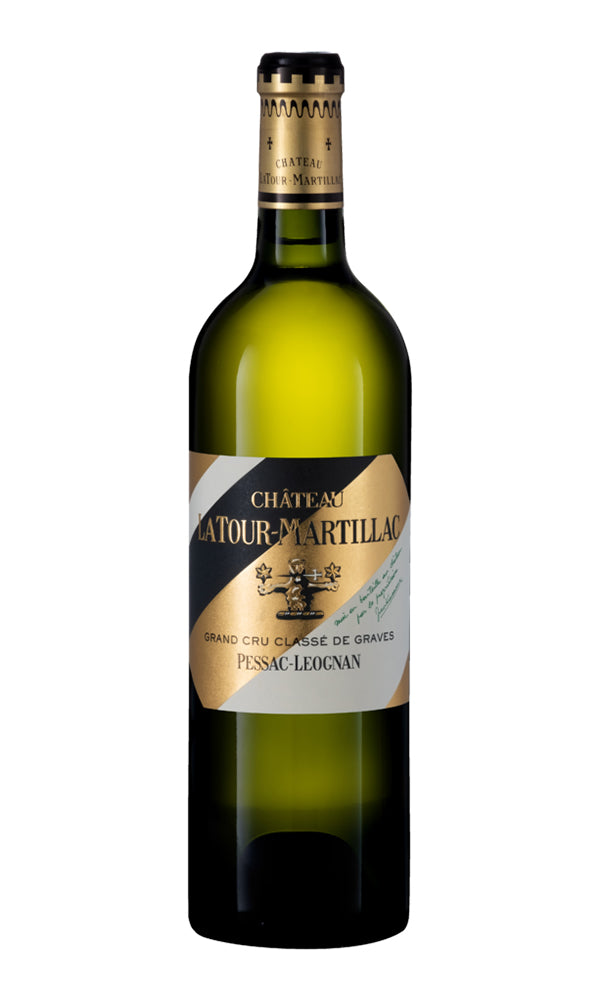- Colour White
- Producer Château Latour-Martillac
- Region Pessac-Léognan
- Drinking 2023 - 2032
- Case size 6x75cl
- Available Now
2020 - Ch Latour Martillac Blanc Grand Cru Classé Pessac-Léognan - 6x75cl
- Colour White
- Producer Château Latour-Martillac
- Region Pessac-Léognan
- Drinking 2023 - 2032
- Case size 6x75cl
- Available Now
Select pricing type
Need help? Call +44 (0)20 7793 7900 or email wine@goedhuiswaddesdon.com.
-
Goedhuis, May 2021, Score: 92-94
68% Sauvignon Blanc, 32% Sémillon A generous and aromatic style with a creamy fruit sensation, full of fresh peach and orange zest. A very attractive combination of plump ripe fruit with Sauvignon Blanc lift and bite. Wonderfully representative of the outstanding quality of the white wines of Pessac-Léognan.
-
Neal Martin, May 2021, Score: 93-95
The 2020 Latour-Martillac Blanc has a more reserved bouquet compared to its peers, but still quite compelling, with crushed rock infusing the dried yellow flowers, white peach and chai tea scents. I could nose this all day. The very well-balanced palate is quite intense, offering a fine bead of acidity and plenty of tension and mineralité toward the saline finish. If I was going to spend my money on one dry white Bordeaux this year, it might well be this. Drink 2024 - 2040
-
Antonio Galloni, June 2021, Score: 88-90
The 2020 Latour-Martillac Blanc is laced with hints of dried flowers, lemon peel, almond and chamomile. There is a pretty sense of airiness that is quite attractive, but the Blanc comes across as a bit diffuse and not totally put together just yet. Drink 2025 - 2035
-
James Suckling, April 2021, Score: 92-93
A dense yet fresh white with sliced lemon and cooked apple. Green mango, too. Phenolic tension. Full-bodied and layered. Solid phenolics at the end.
-
Matthew Jukes, May 2021, Score: 17
Tangy and sour, Latour-Martillac starts sharply and then it cleverly pushes the bulk of the fruit and flavour to the back of the palate, therefore, guaranteeing length and also control. This is a decent effort and I am impressed with the finesse on display.
-
Jancis Robinson, April 2021, Score: 16.5
Inexpressive on the nose, but in such a way that suggests the wine may have hidden depths. Very salivatory and much drier than some of its peers. Rather fine-boned and with lots of energy and drive. Appetising. 13% Drink 2021 – 2029
-
Wine Cellar Insider, May 2021, Score: 92
Flowers, waxy lemon, honeysuckle, grapefruit and tangerine peel scents take no effort to find. The palate is fresh, sweet, juicy and vibrant, with creamy textures, minerality, purity and freshness in the citrus dominated finish. 92
Producer
Château Latour-Martillac
Château Latour Martillac in Pessac Léognan produces both a Grand Cru Classé red and white. It has been owned by the Kressmann family since the mid nineteenth century, currently overseen by brothers Tristan and Loïc. The winemaking and viticulture team headed up by Valérie Vialard have been integral to the estate’s success over the past two decades. Its white – a barrel femented blend of Sémillon and Sauvignon Blanc – is qui...Read more
Château Latour Martillac in Pessac Léognan produces both a Grand Cru Classé red and white. It has been owned by the Kressmann family since the mid nineteenth century, currently overseen by brothers Tristan and Loïc. The winemaking and viticulture team headed up by Valérie Vialard have been integral to the estate’s success over the past two decades. Its white – a barrel femented blend of Sémillon and Sauvignon Blanc – is quite possibly one of the best value in the whole region, offering a quintessential example of great white Bordeaux at an extremely reasonable price. Its reds are firm and leafy, and characteristic of the Grave’s blend of Cabernet Sauvignon, Merlot and Petit Verdot.Read less

Region
Pessac-Léognan
Stretching from the rather unglamorous southern suburbs of Bordeaux, for 50 km along the left bank of the river Garonne, lies Graves. Named for its gravelly soil, a relic of Ice Age glaciers, this is the birthplace of claret, despatched from the Middle Ages onwards from the nearby quayside to England in vast quantities. It can feel as though Bordeaux is just about red wines, but some sensational white wines are produced in this area from a blend of sauvignon blanc, Semillon and, occasionally, muscadelle grapes, often fermented and aged in barrel. In particular, Domaine de Chevalier is renowned for its superbly complex whites, which continue to develop in bottle over decades. A premium appellation, Pessac-Leognan, was created in 1987 for the most prestigious terroirs within Graves. These are soils with exceptional drainage, made up of gravel terraces built up in layers over many millennia, and consequently thrive in mediocre vintages but are less likely to perform well in hotter years. These wines were appraised and graded in their own classification system in 1953 and updated in 1959, but, like the 1855 classification system, this should be regarded with caution and the wines must absolutely be assessed on their own current merits.




